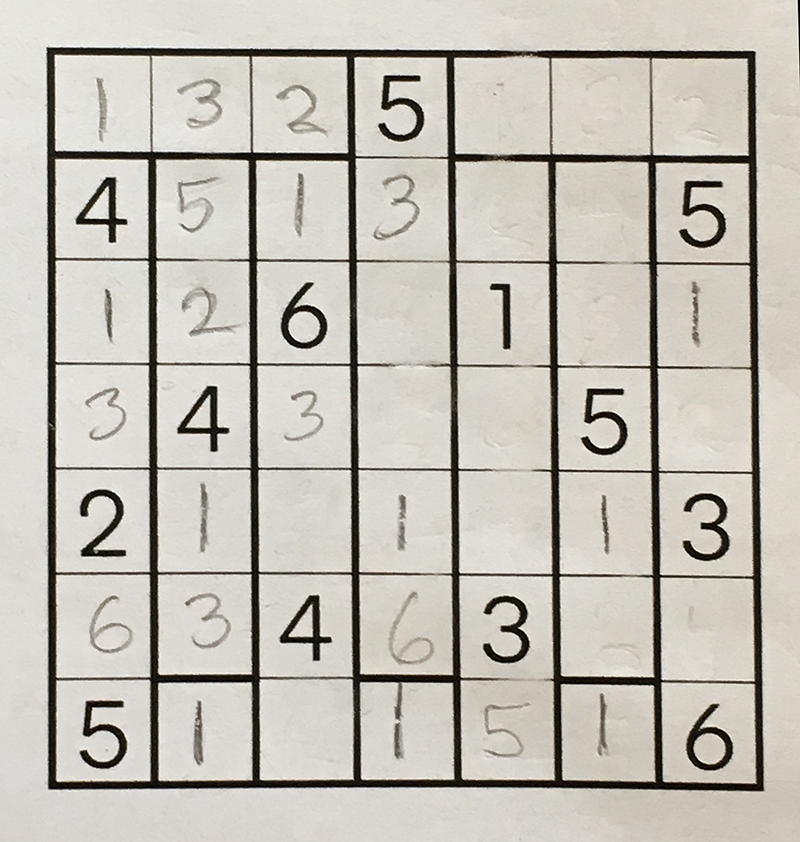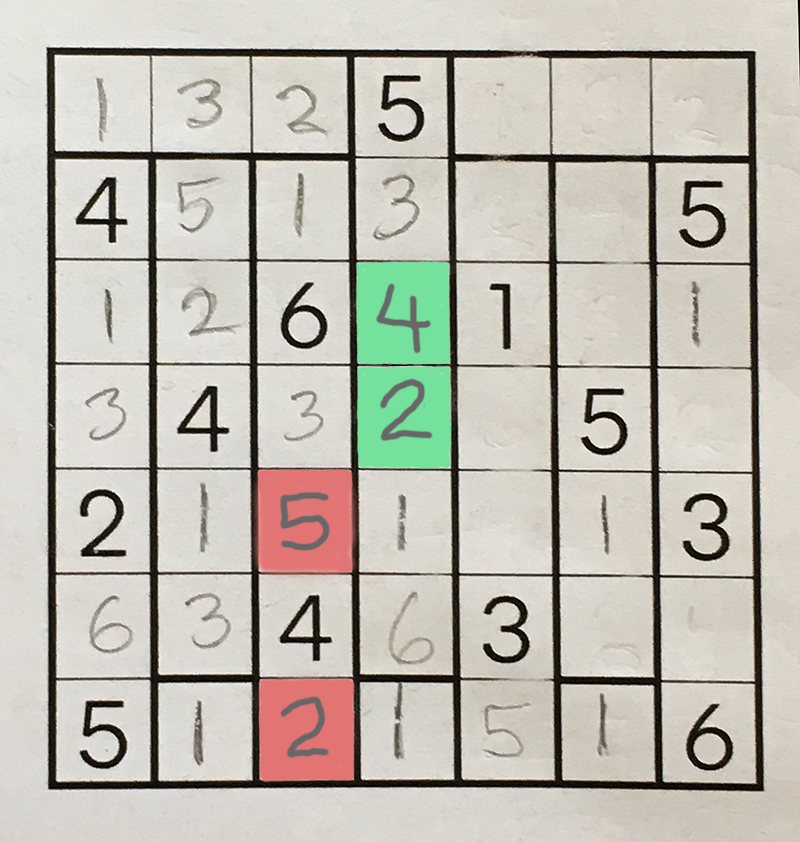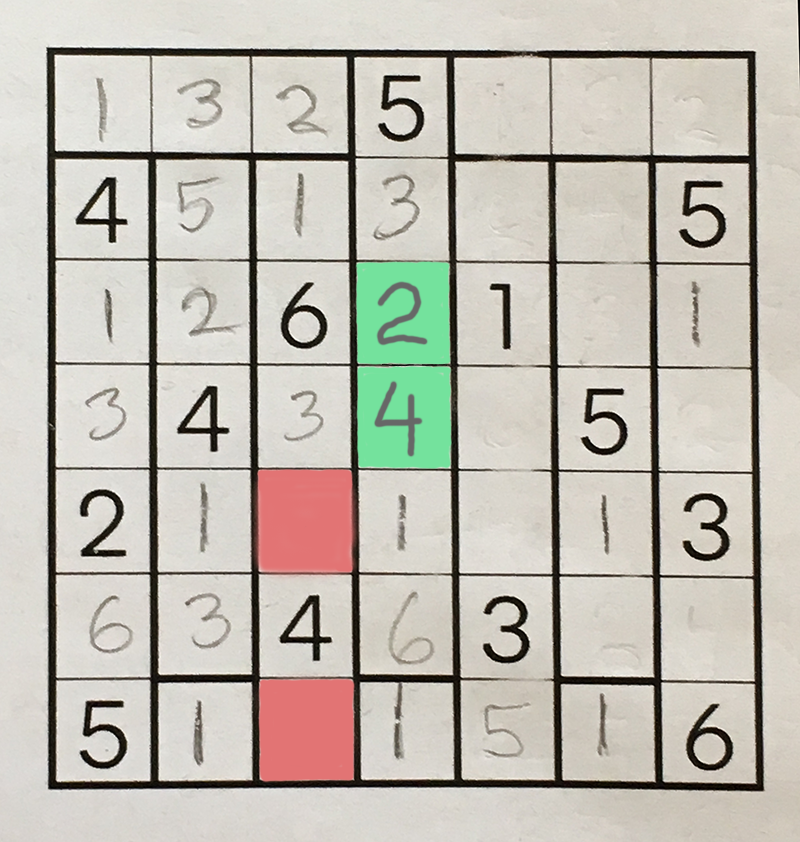For the past few weeks the Sunday New York Times has been publishing a puzzle called Capsules, devised by Wei-Hwa Huang. Here are the instructions:
Place numbers in the grid so that each outlined region contains the numbers 1 to n, where n is the number of squares in the region. The same number can never touch itself, not even diagonally.
Here is a partially completed example:

The black, pre-printed numbers are the “givens,” supplied by the puzzle creator. I filled in the pencil-written numbers in a sequence of “forced” moves dictated by two simple rules:
- A number can be placed in a square if no other number is allowed there. For example, the three singleton squares in the bottom row must each hold a 1, and these squares are the obvious place to start solving the puzzle. After the 1s are written in, the square outlined in yellow in the diagram below can also be filled in; its neighbors forbid any number other than 3.
- A number can be placed in a square if the number has no other possible home within a region. The blue-outlined 1 in the diagram below was determined by this rule. There must be a 1 somewhere in the region, but none of the other squares can accommodate it.

At this point in the solution process, with the grid in the state shown above, I was unable to find any other blank squares whose contents could be decided by following these two rules and no others. But I did spot a move based on a different kind of reasoning. Consider the two pairs of open squares marked in color:

The salmon-pink squares must hold the numbers 2 and 5, but it’s not immediately clear which number goes in which square. Likewise the lime-green squares must hold 2 and 4, in one order or the other. I submit that the numbers must have the following arrangement:

How do I justify that choice? Suppose the green 2 and 4 were transposed:

Then the pink 2 and 5 could be placed in either permutation, and no later moves elsewhere in the puzzle would ever resolve the ambiguity. This outcome is not acceptable if we assume the puzzle must have a unique solution. The uniqueness constraint might be expressed as a third rule:
- A number can be placed in a square if it is needed to prevent other squares from having multiple legal configurations.
I have vague qualms about this mode of puzzle-solving. It’s surely not cheating, but the third rule has a different character from the others. It exploits an assumed global property of the solution, rather than relying on local interactions. We are not making a choice because it is forced on us; we are choosing a cofiguration that will force a choice elsewhere.
In this particular puzzle it’s not actually necessary to apply the uniqueness constraint. There is at least one other pathway to a solution—which I’ll leave to you to find. Can we devise a puzzle that requires rule 3? I’m not quite sure the question is even well-formed. All constraint-satisfaction problems can be solved by a mindless brute-force algorithm: Just write in some numbers at random until you reach a contradiction, then backtrack. So if we want to force the solver to use a specific tool, we somehow have to outlaw that universal jackhammer.
The uniqueness constraint is not unique to the Capsules puzzle. I’ve encountered it often in kenkens, and occasionally in sudokus. I even have a sense of deja lu as I write this. I feel sure I’ve read a discussion of this very issue, somewhere in recent years, but I haven’t been able to lay hands on it. Pointers to precedents are welcome.
Addendum 2017-03-19: Jim Propp reminds me of his marvelous Self Referential Aptitude Test. The instructions begin:
The solution to the following puzzle is unique; in some cases the
knowledge that the solution is unique may actually give you a short-cut
to finding the answer to a particular question.
I completed the 20-question puzzle when SRAT first went public some years ago. This morning I found I was able to do it again with no diminution in enjoyment—or effort. I remembered none of the answers or the sequence of deductions needed to find them.
Highly recommended. And while you’re at it, check out Propp’s Mathematical Enchantments blog and his Twitter feed: @JimPropp.